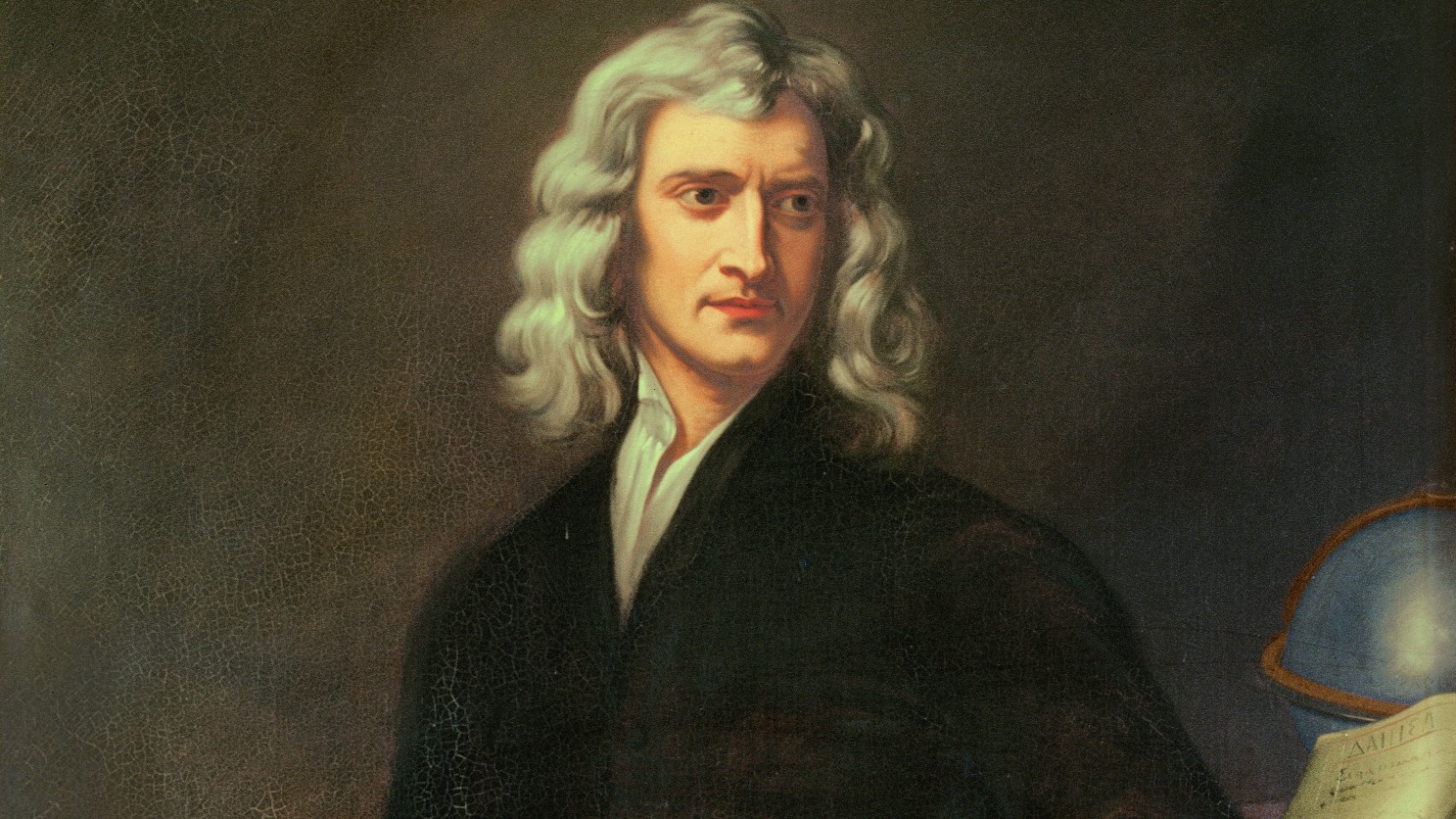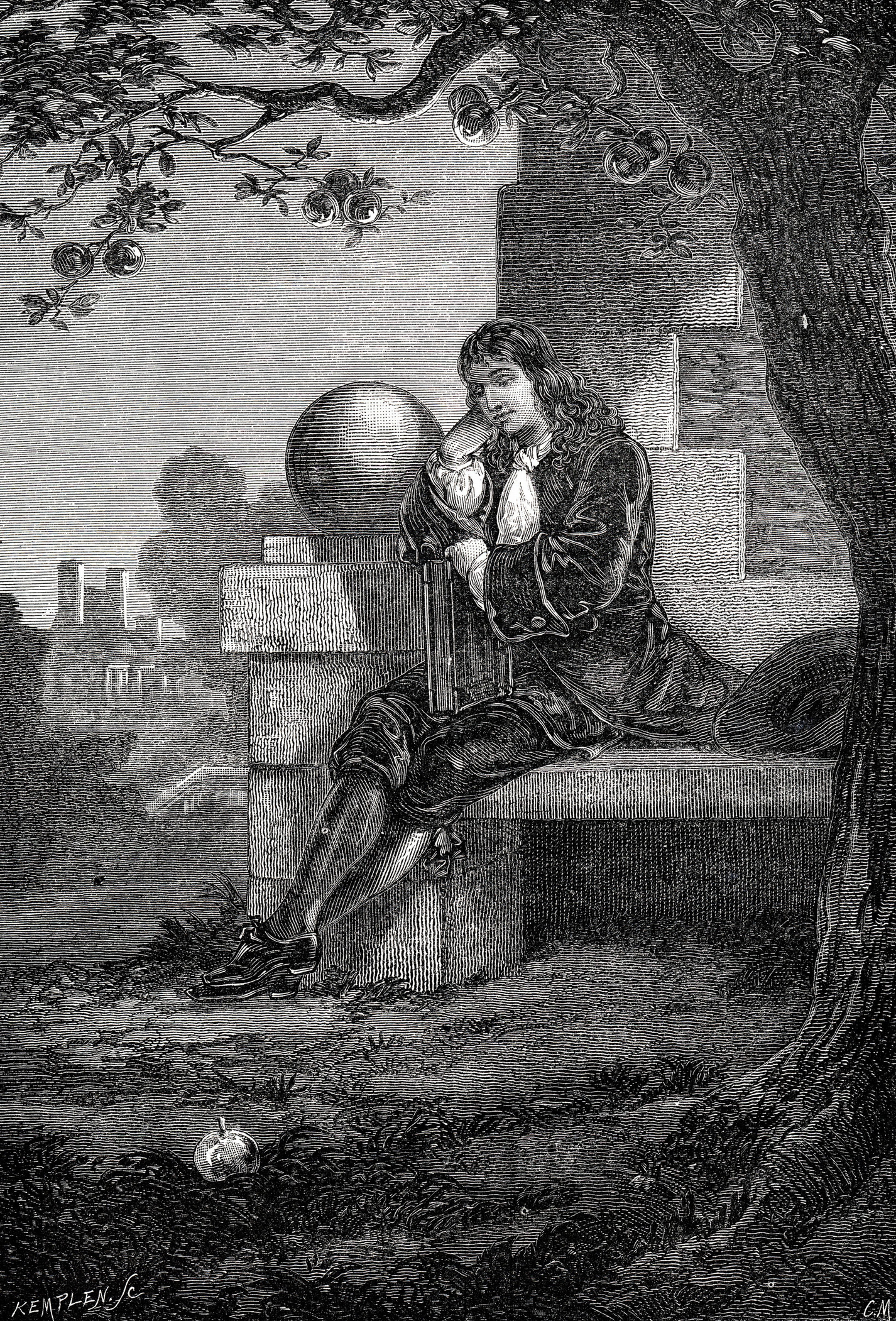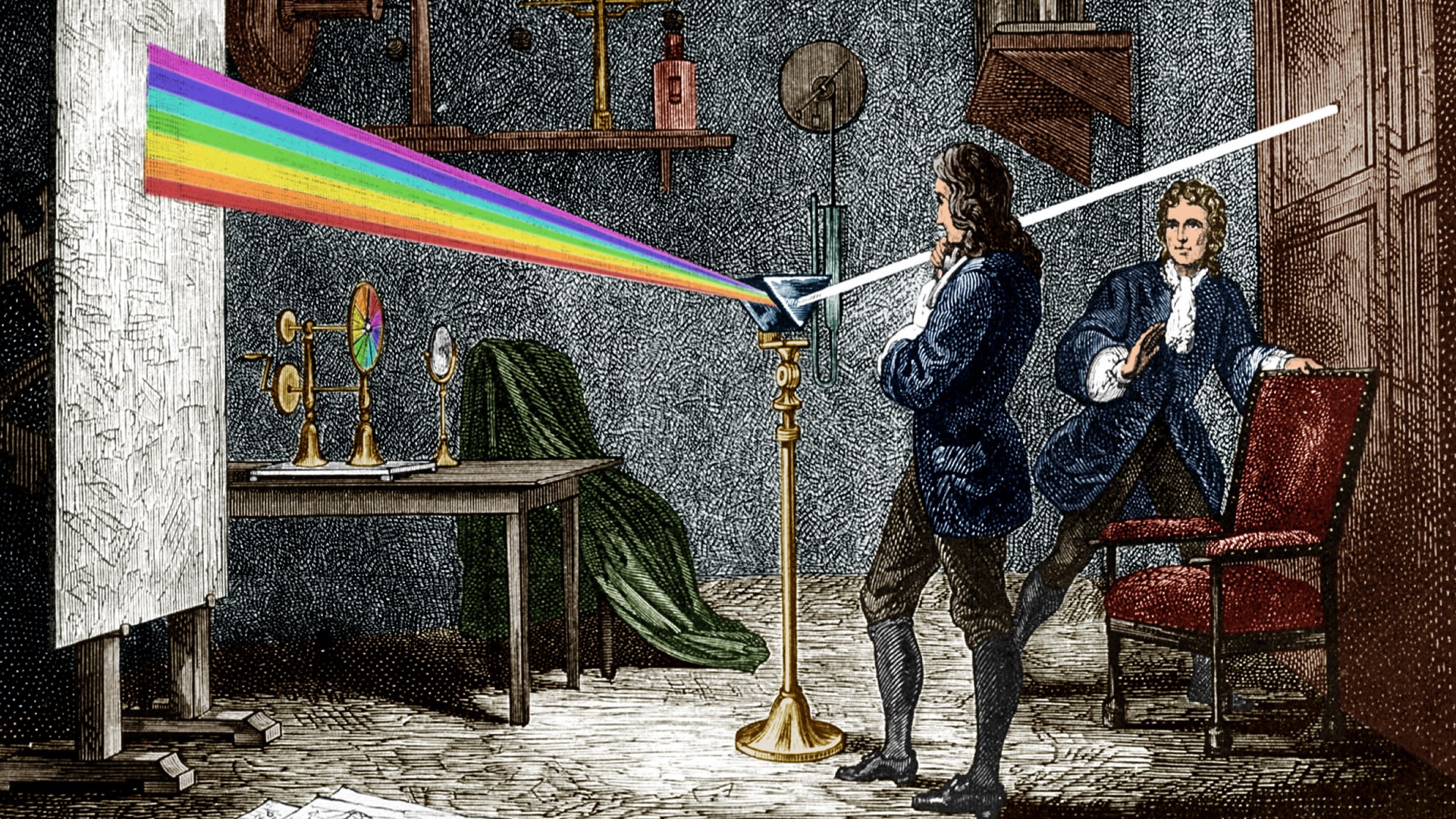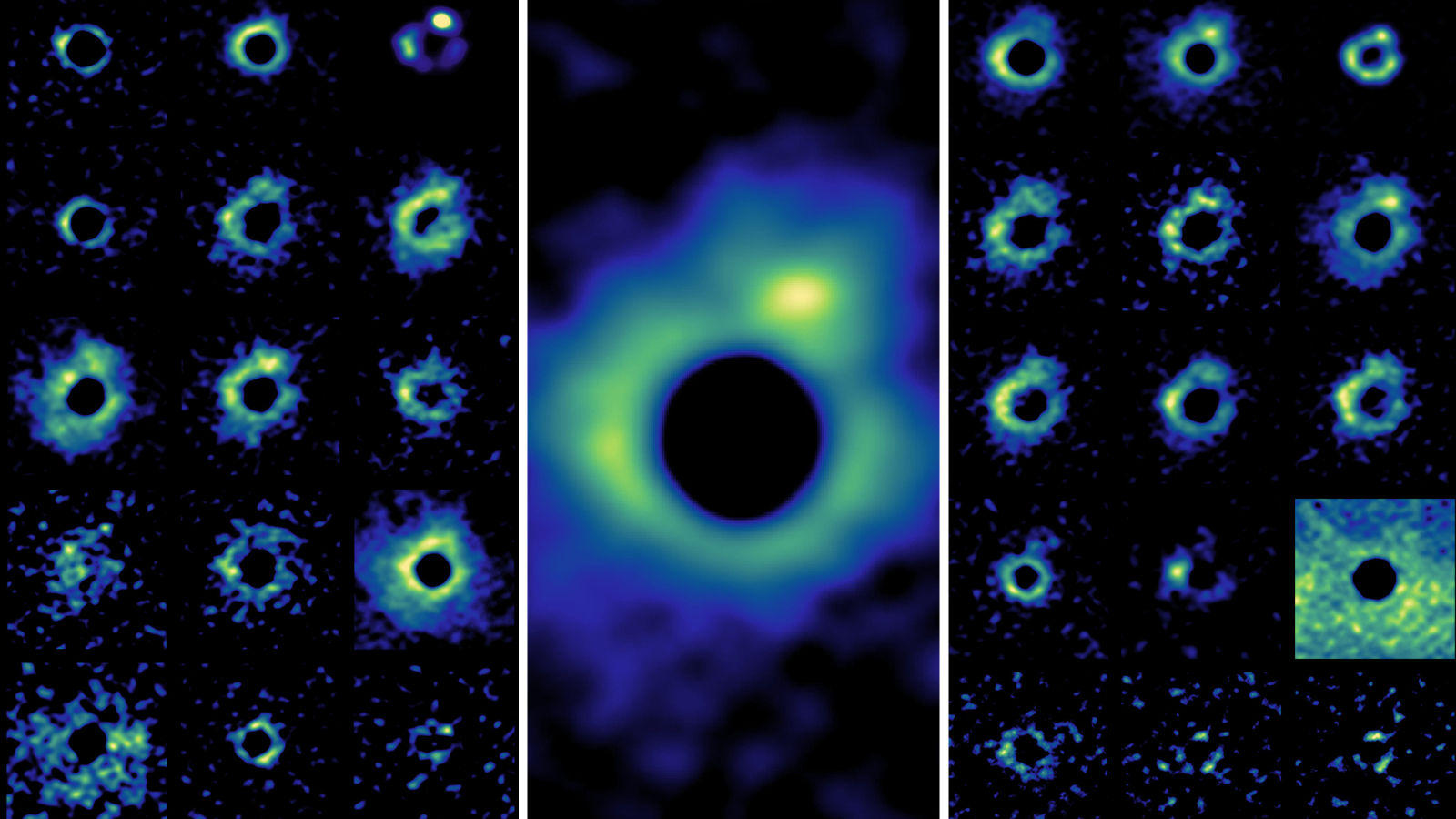Sir Isaac Newton biography: Inventions, laws and quotes
A short history of Sir Isaac Newton, the mathematician and physicist that helped invent and explain some of the most fundamental laws of science.

Sir Isaac Newton contributed significantly to the field of science over his lifetime. He invented calculus and provided a clear understanding of optics. But his most significant work had to do with forces, and specifically with the development of a universal law of gravitation and his laws of motion.
Isaac Newton's early life
Isaac Newton was born on Christmas Day to a poor farming family in Woolsthorpe, England, in 1642. At the time of Newton's birth England used the Julian calendar, however, when England adopted the Gregorian calendar in 1752, his birthday became 4th January 1643.
Isaac Newton arrived in the world only a few months after his father, Isaac Newton Sr, had died. "The boy expected to live managing the farm in the place of the father he had never known," wrote James Gleick in "Isaac Newton" (Vintage, 2004).
However, when it became clear a farming life was not for him, Newton attended Trinity College in Cambridge, England. "He did not know what he wanted to be or do, but it was not tend sheep or follow the plough and the dung cart," wrote Gleick. While there, he took an interest in mathematics, optics, physics, and astronomy.
After his graduation, he began to teach at the college and was appointed as the second Lucasian Chair there. Today, the chair is considered the most renowned academic chair in the world, held by the likes of Charles Babbage and Stephen Hawking.
In 1689, Newton was elected as a member of parliament for the university. In 1703, he was elected as president of the Royal Society, a fellowship of scientists that still exists today. He was knighted by Queen Anne in 1705. He never married.
What are Isaac Newton's laws of motion?
Newton's most famous work came with the publication of his "Philosophiae Naturalis Principia Mathematica" ("Mathematical Principles of Natural Philosophy"), generally called Principia. In it, he determined the three laws of motion for the universe.
Breaking space news, the latest updates on rocket launches, skywatching events and more!
Newton's first law describes how objects move at the same velocity unless an outside force acts upon them. (A force is something that causes or changes motion.) Thus, an object sitting on a table remains on the table until a force — the push of a hand, or gravity — acts upon it. Similarly, an object travels at the same speed unless it interacts with another force, such as friction.
His second law of motion provided a calculation for how forces interact. The law states that a force is equal to the change in the momentum (mass multiplied by velocity) per change in time. Therefore, when more force is applied to an object, its acceleration also increases, but when the mass of the object increases and the force remains constant, its acceleration decreases.
Newton's third law states that for every action in nature, there is an equal and opposite reaction. If one body applies a force on a second, then the second body exerts a force of the same strength on the first, in the opposite direction.
From all of this, Newton calculated the universal law of gravitation. He found that as two bodies move farther away from one another, the gravitational attraction between them decreases by the inverse of the square of the distance. Thus, if the objects are twice as far apart, the gravitational force is only a fourth as strong; if they are three times as far apart, it is only a ninth of its previous power.
These laws helped scientists understand more about the motions of planets in the solar system, and of the moon around Earth.
Related: What makes Newton's laws work? Here's the simple trick.
Isaac Newton's apple
A popular myth tells of an apple falling from a tree in Newton's garden, which brought Newton to an understanding of forces, particularly gravity. Whether the incident actually happened is unknown, but historians doubt the event — if it occurred — was the driving force in Newton's thought process.
The myth tells of Isaac Newton having returned to his family farm in Woolsthorpe, escaping Cambridge for a short time as it was dealing with a plague outbreak. As he sat in the farm's orchard, an apple fell from one of the trees (in some tellings it hit Newton on the head). Watching this happen, Newton began to consider the forces that meant the apple always fell directly towards the ground, beginning his examination of gravity.
One of the reasons that this story gained a foothold in popular understanding is that it is an anecdote Newton himself seems to have shared. "Toward the end of his life, Newton told the apple anecdote around four times, although it only became well known in the nineteenth century," wrote Patricia Fara, a historian of science at the University of Cambridge, in a chapter of "Newton's Apple and Other Myths about Science" (Harvard University Press, 2020).
However, it would be at least 20 years before Newton published his theories on gravity. It seems more likely that Newton used the story as a means of connecting the concept of gravity's impact on objects on Earth with its impact on objects in space for his contemporary audience.
The apple tree in question — known as the "Flower of Kent" — still blooms in the orchard of Woolsthorpe Manor, and is now a popular tourist attraction.
Isaac Newton's inventions and discoveries
While a student, Newton was forced to take a two-year hiatus when plague closed Trinity College. At home, he continued to work with optics, using a prism to separate white light, and became the first person to argue that white light was a mixture of many types of rays, rather than a single entity. He continued working with light and color over the next few years and published his findings in "Opticks" in 1704.
Disturbed by the problems with telescopes at the time, he invented the reflecting telescope, grinding the mirror and building the tube himself. Relying on a mirror rather than lenses, the telescope presented a sharper image than refracting telescopes at the time. Modern techniques have reduced the problems caused by lenses, but large telescopes such as the James Webb Space Telescope use mirrors.
As a student, Newton studied the most advanced mathematical texts of his time. While on hiatus, he continued to study mathematics, laying the ground for differential and integral calculus. He united many techniques that had previously been considered separately, such as finding areas, tangents, and the lengths of curves. He wrote De Methodis Serierum et Fluxionum in 1671 but was unable to find a publisher.
Newton also established a cohesive scientific method, to be used across disciplines. Previous explorations of science varied depending on the field. Newton established a set format for experimentation still used today.
However, not all of Newton's ideas were quite as revolutionary. In Principia, Newton describes how rarefied vapor from comet tails is pulled into Earth's gravitational grasp and enables the movements of the planet's fluids along with the "most subtle and useful part of our air, and so much required to sustain the life of all things with us."
Isaac Newton quotes
"Amicus Plato amicus Aristoteles magis amica verita."
(Plato is my friend, Aristotle is my friend, but my greatest friend is truth.)
—Written in the margin of a notebook while a student at Cambridge. In Richard S. Westfall, Never at Rest (1980), 89.
"Genius is patience."
—The Homiletic Review, Vol. 83-84 (1922), Vol. 84, 290.
"If I have seen further it is by standing on the shoulders of giants."
—Letter to Robert Hooke (5 Feb 1675-6).In H. W. Turnbull (ed.), The Correspondence of Isaac Newton, 1, 1661-1675 (1959), Vol. 1, 416.
"I see I have made my self a slave to Philosophy."
—Letter to Henry Oldenburg (18 Nov 1676). In H. W. Turnbull (ed.), The Correspondence of Isaac Newton, 1676-1687 (1960), Vol. 2, 182.
"I do not know what I may appear to the world, but to myself I seem to have been only like a boy playing on the seashore, and diverting myself in now and then finding a smoother pebble or a prettier shell than ordinary, whilst the great ocean of truth lay all undiscovered before me."
—First reported in Joseph Spence, Anecdotes, Observations and Characters, of Books and Men (1820), Vol. 1 of 1966 edn, sect. 1259, p. 462
"To any action there is always an opposite and equal reaction; in other words, the actions of two bodies upon each other are always equal and always opposite in direction."
— The Principia: Mathematical Principles of Natural Philosophy (1687)
"Truth is ever to be found in simplicity, and not in the multiplicity and confusion of things."
—'Fragments from a Treatise on Revelation". In Frank E. Manuel, The Religion of Isaac Newton (1974), 120.
How did Sir Isaac Newton die?
Newton died in 1727 during his sleep at the age of 84. Although the cause of death is unknown, a 1979 study published by Newton's own Royal Society suggests mercury poisoning may have contributed to the decline of his physical and mental health. During the exhumation of his body, large amounts of mercury were found in the scientist's system, likely due to his work with alchemy. Newton conducted several experiments to convert base metals, such as mercury and copper into precious metals, such as gold and silver.
"In 1693 Newton suffered from insomnia and poor digestion; and he also wrote irrational letters to friends. Although most scholars have attributed Newton's breakdown to psychological factors, it is possible that mercury poisoning may have been the principal cause," wrote L. W. Johnson and M. L. Wolbarsht "Mercury Poisoning: A probable cause of Isaac Newton's physical and mental ills: Notes and Records of the Royal Society of London Vol. 34. No. 1." .
After his death, his body was moved to a more prominent place in Westminster Abbey. His white and grey marble monument stands in the nave of the Abbey's choir screen and boasts sculptures of Newton lounging surrounded by children using the many instruments, such as telescopes, associated with Newton's work. The inscription on the monument — originally written in Latin — reads:
"Here is buried Isaac Newton, Knight, who by a strength of mind almost divine, and mathematical principles peculiarly his own, explored the course and figures of the planets, the paths of comets, the tides of the sea, the dissimilarities in rays of light, and, what no other scholar has previously imagined, the properties of the colours thus produced. Diligent, sagacious and faithful, in his expositions of nature, antiquity and the holy Scriptures, he vindicated by his philosophy the majesty of God mighty and good, and expressed the simplicity of the Gospel in his manners. Mortals rejoice that there has existed such and so great an ornament of the human race! He was born on 25th December 1642, and died on 20th March 1726." The date of his death on his monument is given in the Julian calendar.
Additional resources
If you want to learn more about the impact of this celebrated scientist, then you should read about how Isaac Newton Changed the World. If you're wondering whether Newton's second law of motion works in space then an Astronaut has tested the theory out.
Bibliography
"Isaac Newton" by James Gleick (Vintage, 2004)
"Mercury Poisoning: A probable cause of Isaac Newton's physical and mental ills: Notes and Records of the Royal Society of London Vol. 34. No. 1." by L. W. Johnson and M. L. Wolbarsht (July 1979)
"The Mathematical Principles of Natural Philosophy" by Isaac Newton (Flame Tree Collections, 2020)
"Newton's Apple and Other Myths about Science" edited by Ronald L. Numbers and Kostas Kampourakis (Harvard University Press, 2020)
"Life After Gravity: Isaac Newton's London Career" by Patricia Fara (Oxford University Press, 2021)
"Isaac Newton" Stanford Encyclopedia of Philosophy (2007)
"Isaac Newton" University of St Andrews (2000)
"Sir Isaac Newton" Westminster Abbey (2023)

Nola Taylor Tillman is a contributing writer for Space.com. She loves all things space and astronomy-related, and always wants to learn more. She has a Bachelor's degree in English and Astrophysics from Agnes Scott College and served as an intern at Sky & Telescope magazine. She loves to speak to groups on astronomy-related subjects. She lives with her husband in Atlanta, Georgia. Follow her on Bluesky at @astrowriter.social.bluesky


